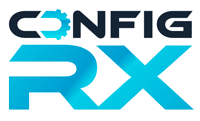
Email Marketing for Pharmacies: Building Customer Relationships One Email at a Time
In today’s fast-paced digital world, staying connected with your pharmacy’s customer base is essential for success. Email marketing offers a powerful way for pharmacies to engage with customers, promote services, and provide valuable health information. This comprehensive guide will walk you through the fundamentals of email marketing for pharmacies, from building your pharmacy email database to crafting effective email campaigns that resonate with your audience.
Table of Contents
Building Your Pharmacy Email Database
Crafting Engaging Email Content
Segmenting Your Audience for Personalization
Effective Email Campaigns for Pharmacies
Measuring Success: Analytics and Optimization
Conclusion: Strengthening Your Pharmacy’s Online Presence

1. Building Your Pharmacy Email Database
Starting from Scratch
If you’re just getting started with email marketing, the first step is to build your pharmacy email database. Start by collecting email addresses from your existing customers. You can ask for emails during prescription pickups, at the pharmacy counter, or on your website.
Compliant Data Gathering
Ensure that you follow all data privacy regulations, such as HIPAA in the United States, when collecting email addresses. Customer consent is crucial, and you must clearly communicate how their email addresses will be used.
2. Crafting Engaging Email Content
Simple and Informative
Your email content should be straightforward and informative. Avoid complex medical jargon and use simple language that your customers can easily understand. Share health tips, medication reminders, or news about new services your pharmacy offers.
Visual Appeal
Incorporate visuals like images and infographics to make your emails visually appealing. Use images of your pharmacy team or stock photos related to healthcare to add a human touch to your emails.
3. Segmenting Your Audience for Personalization
Segmentation Basics
Segment your email list based on customer preferences, demographics, and purchase history. This allows you to send personalized content that resonates with specific groups. For example, you can send flu shot reminders to senior customers and pediatric medication information to parents.
Personalized Subject Lines
Craft subject lines that grab your customers’ attention and show that your email is tailored to their needs. For instance, “Exclusive Offer for Diabetes Care” or “Personalized Medication Updates” can entice recipients to open your emails.
4. Effective Email Campaigns for Pharmacies
Medication Reminders
Send timely medication reminders to help customers stay on track with their prescriptions. Include dosage instructions and potential side effects in a clear and concise manner.
Health Tips and Advice
Provide valuable health tips and advice in your emails. Topics like managing chronic conditions, healthy living, and immunization schedules can resonate with your audience.
Promotions and Special Offers
Occasionally, offer promotions or special discounts on over-the-counter products or services your pharmacy provides. Make sure these offers are relevant to your customers’ needs.
Seasonal Campaigns
Create seasonal email campaigns, such as flu shot reminders in the fall or allergy tips in the spring. Seasonal content keeps your pharmacy top of mind for customers’ healthcare needs.
Customer Testimonials
Share success stories and testimonials from satisfied customers. Hearing about positive experiences can build trust and loyalty among your audience.

5. Measuring Success: Analytics and Optimization
Tracking Metrics
Use email marketing software to track the performance of your campaigns. Monitor metrics like open rates, click-through rates, and conversion rates to gauge the effectiveness of your emails.
A/B Testing
Experiment with different email subject lines, content, and visuals using A/B testing. This allows you to discover what resonates best with your audience and fine-tune your future campaigns.
Regular Optimization
Based on your analytics and A/B testing results, continuously optimize your email campaigns. Adapt your content and strategies to better serve your customers’ needs and preferences.
Conclusion: Strengthening Your Pharmacy’s Online Presence
In the digital age, email marketing has become a powerful tool for pharmacies to connect with customers, provide valuable healthcare information, and promote their services. Building a pharmacy email database, crafting engaging content, personalizing emails, and measuring success through analytics are all vital components of a successful email marketing strategy.
By following these best practices and staying committed to delivering valuable content to your customers, you can strengthen your pharmacy’s online presence, build lasting customer relationships, and ultimately, enhance the health and well-being of your community—one email at a time.
Frequently Asked Questions (FAQs)
How can I ensure my email marketing complies with healthcare regulations?
To ensure compliance, obtain clear consent from customers before adding them to your email list. Additionally, follow data protection regulations like HIPAA when handling customer data.
What should I include in medication reminder emails?
Medication reminder emails should include the patient’s name, medication name, dosage instructions, and potential side effects. You can also provide a link for prescription refills or questions.
How often should I send promotional emails?
The frequency of promotional emails depends on your customers and your pharmacy’s offerings. Generally, aim for a balance between informative content and promotions, and avoid overwhelming your subscribers.
How can I increase email open rates?
To boost open rates, use personalized subject lines, send emails at optimal times, and ensure your content is relevant and engaging. Clean your email list periodically to remove inactive subscribers.
